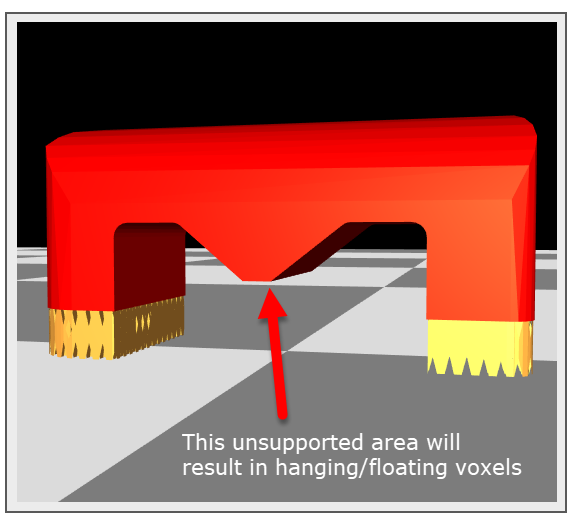We will discuss supports in more detail in the next section, but be aware of one scenario related to geometry that you should try to avoid—having an overhanging "stalactite" point, line, or surface that is unsupported. In the following figure, the middle section of the M-shaped geometry is not supported. When the appropriate layer is reached and the laser travels the scan vectors for the bottom of the M, an "island" of solid is formed surrounded by powder. This is undesirable for two reasons:
When you attempt to print this part on an LPBF machine, the layers at the center of the M will likely get wiped out by the recoater blade with each new pass because there is nothing holding the solidified layer in place on the powder.
In the numerical simulation, the unsupported area at the center of the M will result in what is known as hanging and floating voxels, with no connection or support from voxels that touch the base. The Mechanics Solver will accommodate for this by not applying strains to any floating voxels until they are no longer floating, that is, until they are connected to other voxels that are connected to the base. You will see a message in your logs indicating the number of hanging/floating elements.



